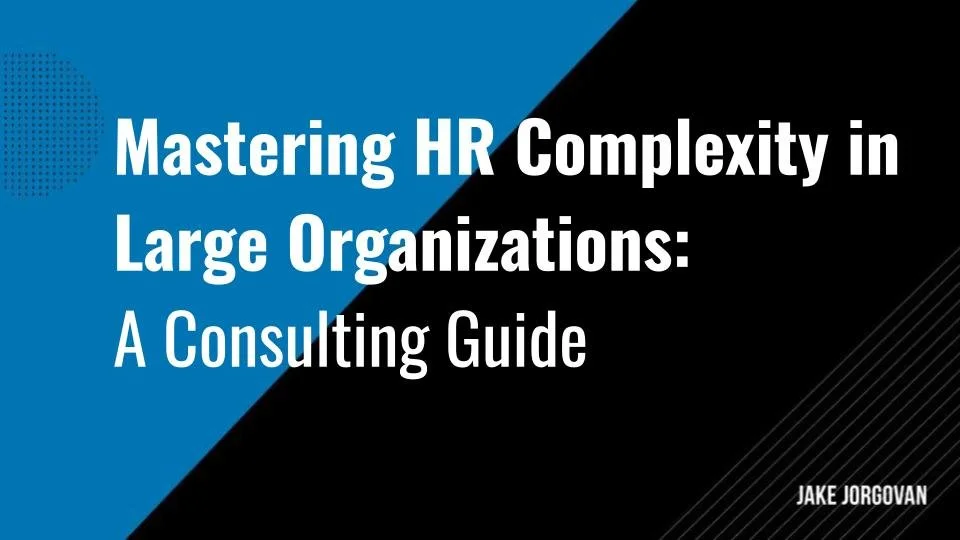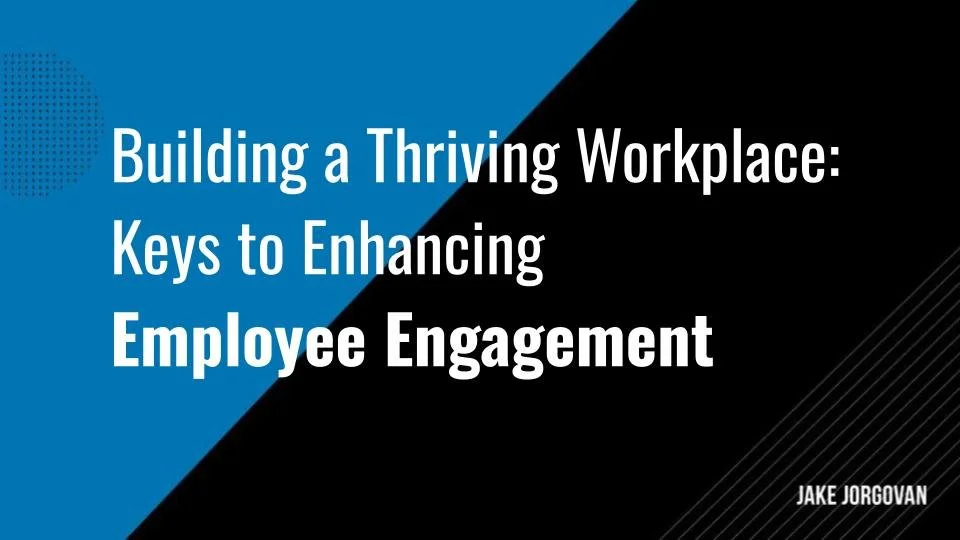Thriving During a Talent Shortage: Unique Tactics for Businesses
Securing top candidates during a talent shortage requires strategic thinking in order to remain competitive.
You need unique tactics for attracting and retaining the best talent because traditional methods will not take you far enough.
It’s also important to understand the root cause of talent shortages so you can develop clear strategies for tackling them.
This article covers:
5 unique recruiting tactics that help you succeed during a talent shortage
Keep reading to learn how to start these strategies today to build a workforce resilience level that meets any challenge.
Understanding Talent Shortages
Talent shortages arise from several key factors. And understanding these factors helps you develop strategies to address them effectively. Let’s take a closer look:
Demographic Shifts: An aging workforce leads to a higher number of retirements. This creates gaps in experience and skills. In addition, fewer younger workers entering the job market make this issue worse.
Technological Advancements: Rapid technological changes outpace the current workforce's skills. Thus, new roles emerge that require specialized knowledge. And traditional education and training programs often fail to keep up.
Education and Skill Gaps: There is a disconnect between what industries need and what educational institutions provide. Graduates often lack the practical skills needed for modern jobs, and this gap forces businesses to spend more on training new hires.
Geographical Imbalances: Talent shortages are more pronounced in certain regions. High-demand areas struggle to attract and retain skilled workers. This imbalance disrupts local economies and hampers business growth.
Economic Factors: Economic cycles influence the availability of talent. During economic booms, demand for skilled workers increases. This leads to competition and shortages. But during downturns, talent in less-demanded fields may be over-saturated.
Industry-Specific Challenges: Certain industries face unique challenges that contribute to talent shortages. For example, the healthcare and tech sectors constantly need highly specialized skills. So, these industries must compete for a limited pool of qualified candidates.
Workplace Expectations: Modern workers prioritize work-life balance and meaningful work. And companies that fail to meet these expectations struggle to attract and retain talent. Flexible working conditions and a positive company culture become crucial.
5 Tactics for Thriving During a Talent Shortage
1) Leverage Gig and Freelance Workers
You can effectively leverage gig and freelance workers to work through a talent shortage. This strategy provides flexibility and access to a broad talent pool without long-term commitments. Follow these steps to maximize your success:
Identify Core Needs: Analyze your business's critical tasks and projects. Determine which ones can be handled by gig workers or freelancers to ensure efficient allocation of your permanent staff.
Source High-Quality Freelancers: Use specialized platforms like Upwork, Toptal, or Fiverr. These sites vet their freelancers and offer a reliable pool of skilled professionals. Prioritize those with high ratings and relevant experience.
Create Clear Job Descriptions: Detail your expectations, deadlines, and project scope. Clear communication helps attract the right talent and sets the stage for successful collaboration.
Onboard Effectively: Provide freelancers with necessary resources and information. A streamlined onboarding process ensures they can start contributing quickly and effectively.
Utilize Collaboration Tools: Leverage tools like Slack, Trello, and Asana for project management and communication. These tools allow for the seamless integration of freelancers into your existing workflows.
Maintain Regular Check-ins: Schedule periodic reviews to monitor progress and address any issues promptly. Regular feedback ensures alignment and helps maintain high-quality output.
Build Relationships: Build long-term relationships with top-performing freelancers. Consistent collaboration can lead to better understanding and improved results over time.
Insider Tip:
We recommend developing a tiered engagement strategy and starting with small projects to test compatibility. Once you've identified reliable freelancers, gradually increase their responsibilities. This approach minimizes risk and maximizes productivity by creating a trusted network of go-to gig workers.
2) Implement Employee Referral Programs
Implementing an employee referral program can be impactful during a talent shortage. This strategy leverages your current workforce to attract top talent and provides a reliable recruitment method. Follow these steps to create a successful program:
Be Clear on Goals: Define the goals of the program, set very clear targets in terms of the number of referrals and quality of candidates, and the timeline to meet these goals.
Design Attractive Incentives: Offer attractive rewards that will motivate employees. Consider monetary bonuses, extra vacation days, or other benefits that will motivate your team. Ensure the incentives are meaningful and reflect the effort that goes into making successful referrals.
Streamline the Referral Submission Process: Create an easily accessible system for submitting referrals. This can be done through online forms or dedicated software. Simplifying the process for employees will ensure participation.
Promote the Program: Announce the program to all employees through internal communication channels. Regularly remind the staff about the program through emails, meetings, and the company newsletter. Highlight the benefits and successes to keep engagement high.
Give Feedback and Recognition: Acknowledge those who have referred candidates, even when the candidates are not hired. Public recognition and feedback may motivate such people and show appreciation for their efforts.
Monitor and Track Performance: Monitor the key metrics for the program's effectiveness. Check for referral quality, time to hire, and retention. Use data to shape the program and correct deficiencies.
Insider Tip:
We suggest integrating a social media sharing component into your referral program. You should encourage employees to share job openings on their personal networks. This expands your reach and taps into a broader talent pool. It’s helpful to use trackable links to measure the effectiveness of these shares and adjust your strategy accordingly.
3) Use Advanced Recruitment Technologies
Advanced recruitment technologies can streamline your hiring process and give you a competitive edge. These tools help you identify, attract, and hire top talent more efficiently. Here’s how to implement them:
AI-Enabled Platforms: Use AI-driven tools such as HireVue and Pymetrics. These help you go through candidate data and match skills to job requirements. That’s how you can save time and focus only on the right fit.
Use Applicant Tracking Systems (ATS): Adopt an ATS solution like Greenhouse or Lever. An ATS automates many steps in the hiring process, including posting jobs, screening resumes, and scheduling interviews. Thus, it helps reduce the administrative workload.
Data Analytics: Use data analytics to understand current and past trends in recruitment and candidate behavior. Tools such as LinkedIn Talent Insights allow you to understand where the top talent can be found and what skills are in demand. So use them to sharpen your recruitment approach.
Video Interviewing Tools: Use available platforms like Zoom or Microsoft Teams for first-point interactions. Video interviews save time and travel expenses for both the interviewer and the candidate and create a convenient experience for the candidate.
Leverage Social Media for Recruitment: Use social media platforms to reach out to potential candidates. Post job openings on professional and personal social networks such as LinkedIn, Facebook, and Twitter and directly communicate with candidates. Be sure you send targeted messages to attract the right talent.
Improve your Careers Page: Put in the effort to make your company careers page visually appealing. Highlight company culture and benefits to attract candidates. Also, make the application process simple and mobile-friendly.
Insider Tip:
We recommend using AI chatbots to handle initial candidate queries. This approach provides quick responses to potential hires and frees up your HR team for more complex tasks. Chatbots can also pre-screen candidates, which ensures that only qualified applicants move forward in the process.
4) Focus on Employer Branding
Strengthening your employer brand is crucial during a talent shortage. This approach attracts top talent by showcasing your company as an ideal place to work. Here’s how to enhance your employer branding:
Define Your Unique Value Proposition (UVP): Identify what sets your company apart from competitors. Highlight aspects like company culture, career development opportunities, and unique benefits. Ensure your UVP resonates with your target candidates.
Showcase Employee Testimonials: Feature testimonials from current employees on your website and social media. Real stories and experiences build trust and authenticity, and potential candidates will gain a better understanding of your work environment.
Leverage Social Media: Maintain an active LinkedIn, Instagram, and Twitter presence. Share engaging content that reflects your company culture. Highlight events, achievements, and day-to-day activities to give candidates a glimpse into your workplace.
Engage with Industry Influencers: Partner with industry leaders and influencers to enhance your brand’s credibility. Their endorsement can attract high-quality candidates. Participate in webinars, podcasts, and industry events to increase visibility.
Create a Positive Candidate Experience: Streamline your recruitment process to ensure it is efficient and respectful. Provide clear communication, timely feedback, and a supportive interview experience. You do this because a positive candidate experience strengthens your reputation.
Insider Tip:
We advise creating a dedicated employee advocacy program. Encourage employees to share their positive experiences and company content on their personal networks. This organic reach can significantly boost your employer brand and attract top-tier talent. Provide incentives and resources to support their advocacy efforts.
5) Develop Internal Talent through Upskilling Programs
Developing internal talent through upskilling programs is essential during a talent shortage. This approach fills skill gaps and boosts employee morale and retention. Follow these steps to implement effective upskilling programs:
Assess Skill Gaps: Conduct a thorough analysis of your current workforce. Identify the skills that are lacking and prioritize those that align with your business goals. Use employee surveys, performance reviews, and industry benchmarks to gather this data.
Design Customized Training Programs: Create training modules tailored to your employees' needs. Use a mix of online courses, workshops, and hands-on training. Also, check that the content is relevant and up-to-date.
Leverage External Resources: Partner with educational institutions and professional organizations. Use platforms like Coursera, Udemy, or LinkedIn Learning for access to a wide range of courses. This collaboration can provide specialized expertise and additional training resources.
Promote Continuous Learning: Encourage a culture of continuous improvement. Set aside regular time for training and development and provide employees with access to learning materials and resources.
Implement Mentorship Programs: Pair less experienced employees with seasoned mentors. Mentorship enables knowledge transfer and supports professional growth. It also helps employees apply new skills in real-world situations.
Measure and Adjust: Track the effectiveness of your upskilling programs. Use metrics like completion rates, skill assessments, and performance improvements. Gather feedback from participants to refine and enhance the programs.
Insider Tip:
We recommend incorporating microlearning techniques into your training programs. Microlearning delivers content in small, focused segments, which makes it easier for employees to absorb and retain information. Use short videos, quizzes, and interactive modules to keep the training engaging and effective. This approach can significantly enhance learning outcomes and ensure skills are quickly applied in the workplace.
Stay Ahead of the Competition During a Talent Shortage
In a talent shortage, innovative strategies are essential.
Leveraging gig workers and employee referral programs can expand your talent pool. Advanced recruitment technologies streamline hiring processes, and focusing on employer branding attracts top candidates. Additionally, upskilling your current workforce addresses skill gaps.
This article discussed these strategies, with practical step-by-step plans for each.
Now it’s your turn to implement these five tactics to build a resilient, capable workforce ready for any challenge.
































